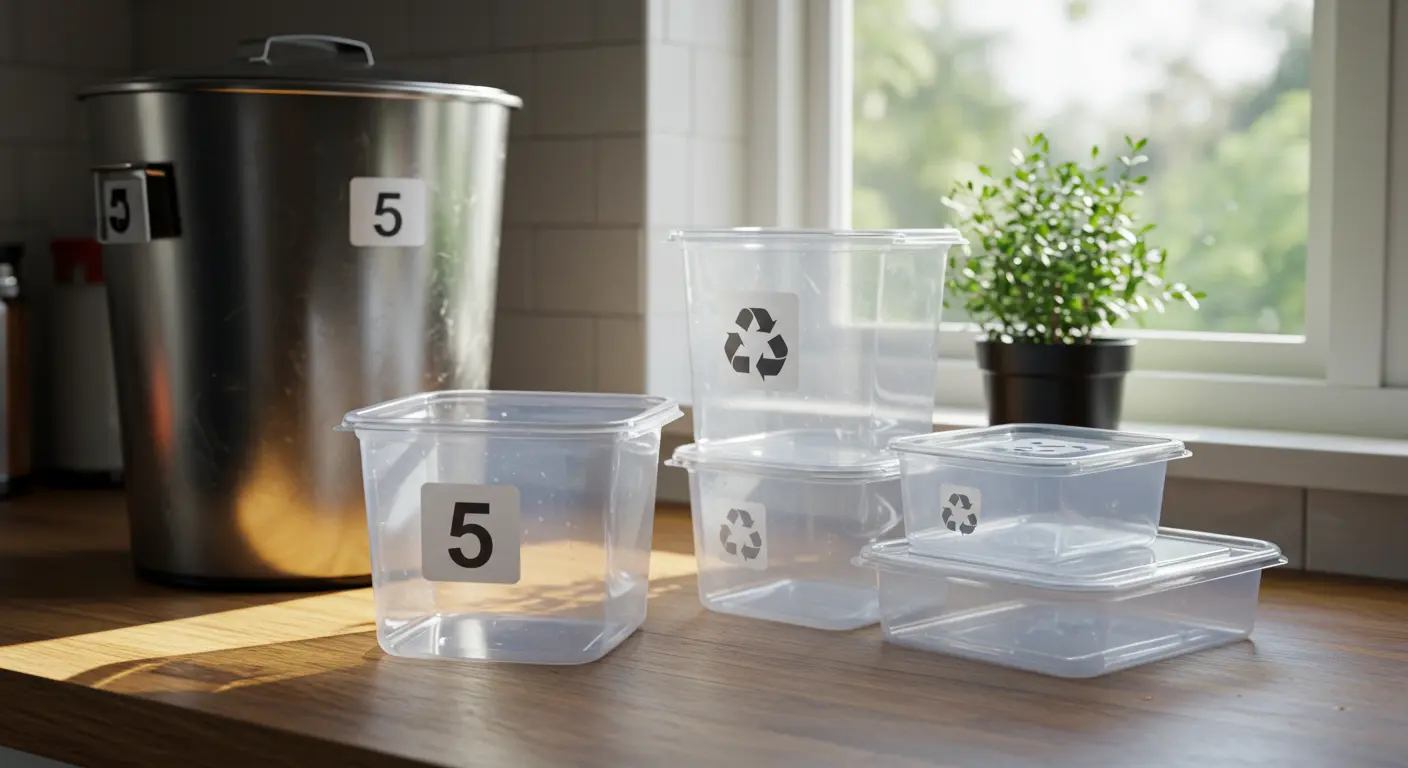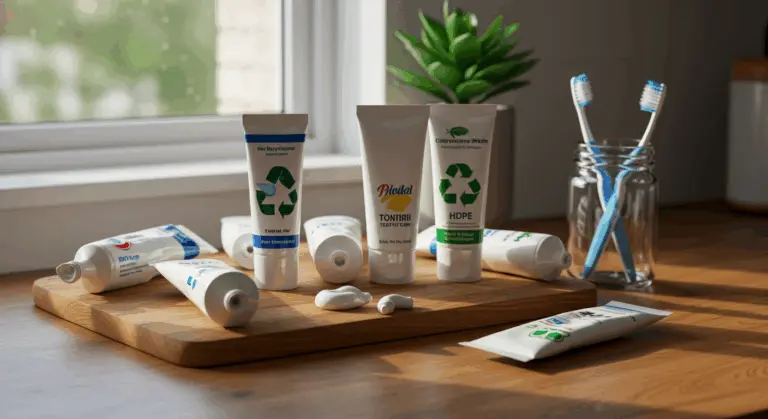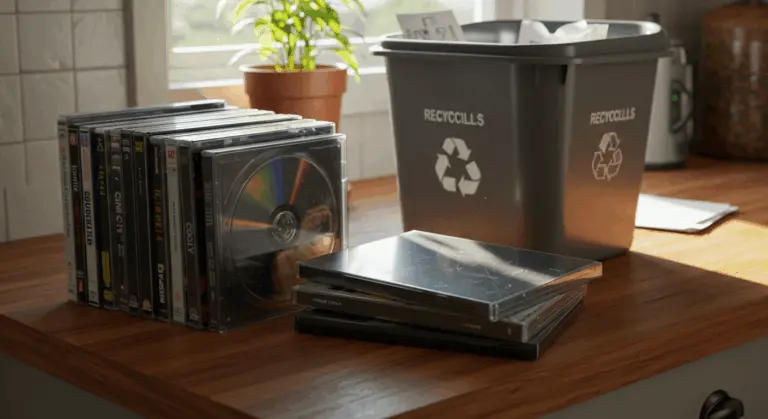What Are Number 5 Plastics? – Understanding Polypropylene
That number 5 nestled within the familiar recycling symbol? It’s your key to identifying polypropylene (PP)—a highly versatile plastic that’s earned its place in countless everyday applications due to its many useful characteristics.
-
High Heat Resistance: Withstands temperatures up to 275°F (135°C), making it ideal for microwave-safe containers and holding hot foods.
-
Durability and Strength: Combines lightweight properties with remarkable strength.
-
Chemical Resistance: Resists most acids, bases, and solvents, making it safe for food and chemical storage.
-
Cost-Effectiveness: It is relatively inexpensive to produce, contributing to its widespread use in packaging and consumer goods.
Recallability of Number 5 Plastics – Can They Be Recycled?
Absolutely, number 5 plastics are recyclable—but here’s the catch: acceptance varies dramatically depending on where you live.
Careful preparation is essential. Containers must be thoroughly emptied and cleaned, as even small amounts of food residue can contaminate entire batches.
The main challenge isn’t polypropylene itself—it’s the shortage of specialized infrastructure and equipment required for cost-effective processing.
Municipality Recycling Programs – What You Need to Know
Your location determines your options for recycling number 5 plastics.
Never assume—always verify your community’s specific guidelines. Most municipalities provide this information on their official websites, through dedicated apps, or via customer service hotlines.
Environmental Impact of Number 5 Plastics – Why Recycling Matters
The environmental benefits of polypropylene recycling are substantial.
-
Conserves Natural Resources: Recycling one ton of PP saves approximately 1,300-1,600 pounds of crude oil.
-
Reduces Energy Consumption: The process requires about 80% less energy than producing new PP from raw materials.
-
Lowers Greenhouse Gas Emissions: It cuts carbon dioxide emissions by 1–3 tons per ton of material recycled.
-
Saves Water: Recycling processes typically use 90% less water than virgin plastic production.
Beyond these statistics, recycling number 5 plastics helps address the growing crisis of plastic pollution in oceans and waterways. From yogurt containers to medicine bottles, polypropylene debris ranks among the ocean’s most persistent plastic pollutants. By keeping these materials in the recycling stream, we prevent them from becoming environmental hazards that threaten wildlife and ecosystem health.
Individual actions create meaningful change. When communities prioritize the proper recycling of polypropylene, they contribute to a significant reduction in landfill volume, decreased pollution, and conservation of natural resources. As recycling technology continues to improve and more facilities develop the capability to process number 5 plastics efficiently, the environmental benefits will only increase—making each recycling decision more impactful.
Recycling Facilities for Number 5 Plastics – Where to Recycle
The recycling landscape for number 5 plastics has changed significantly in recent years.
The primary options for recycling your number 5 plastics include:
-
Municipal Recycling Programs: Check if your local program accepts #5 plastics in curbside bins or at drop-off locations.
-
Retail Take-Back Programs: Major retailers like Whole Foods Market (via the Preserve Gimme 5 program) and some Target locations have collection points.
-
Mail-Back Programs: Companies like Terra Cycle offer specialized mail-in recycling services for difficult-to-recycle materials.
-
Specialized Recycling Facilities: Some Materials Recovery Facilities (MRFs) have advanced sorting technology to handle PP.
-
Plastic Lumber Companies: These businesses often accept #5 plastics as raw material for products like decking and furniture.
Finding the right facility is straightforward—use online resources like Earth911’s recycling directory (searchable by material and zip code) or the How2Recycle website.
Meanwhile, domestic processing capacity for polypropylene is gradually increasing. New technologies and investments are making it more feasible for recycling facilities to process number 5 plastics efficiently. Every polypropylene item you successfully recycle supports market demand, encouraging infrastructure development.
Keeping Number 5 Plastics Out of the Trash – Best Practices
Even as recycling infrastructure catches up, there are several proactive steps you can take to minimize the environmental impact of number 5 plastics:
-
Reduce consumption: The most effective step is to reduce usage. Opt for products with minimal packaging or those in more widely recyclable materials like glass or metal.
-
Reuse before recycling: Polypropylene’s durability makes it excellent for reuse. Clean containers can be repurposed for food storage, organizing small items, or as planters.
-
Upcycle creatively: Transform PP items into new, useful objects through DIY projects to extend their life.
-
Support specialized initiatives: Use mail-back programs (e.g., Terra Cycle) or retail take-back programs if local options are unavailable.
-
Advocate for better systems: Encourage manufacturers to use sustainable packaging and support laws that require them to manage product disposal.
-
Choose recycled content: Purchase products containing post-consumer recycled PP to create market demand.
-
Educate your community: Share information on proper recycling to reduce contamination rates in local recycling streams.
When applied consistently, you can significantly reduce the amount of number 5 plastic that ends up in landfills or incinerators, even in areas where formal recycling options are limited. Individual choices add up—when multiplied across communities, they create real environmental change.




